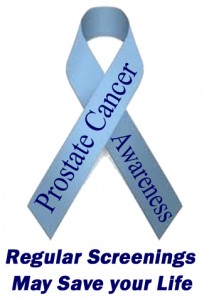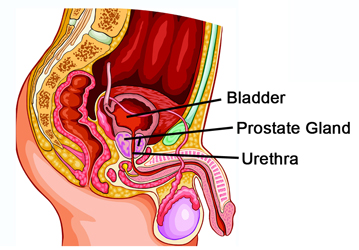Making sense of prostate health and making the best choice. What causes an enlarged prostate? What role does testosterone play in prostate health? What is the best prostate supplement? Is Soy a concern for men and prostate health?
Difficulty urinating and reduced flow are common signs of an enlarged prostate. Equally common is waking multiple times in the night to urinate. Often men feel run down and they may or may not have reduced sexual desire or even impotence. An understanding of testosterone and your prostate is both important and can help you when you communicate with your health care provider.
Generally when you see your physician and complain of feeling decreased sex drive in addition to feeling no energy the first thing physicians turn to is a simple blood test to check testosterone levels.
Throughout a man’s life his body produces testosterone. As a man ages, the amount of circulating testosterone begins to decline steadily after the age of forty. The decrease is relatively small and occurs at a rate of 1% or 2% per year. Virtually all men experience a decline in testosterone. There are a small percentage of men that have testosterone levels below what is considered normal for their age. Low testosterone is defined by the medical community as less than 300 nanograms per deciliter of blood. Only one-half to two-thirds of all men with low testosterone report symptoms. The symptoms include low sex drive, erectile dysfunction, mood problems, fatigue, and sleep disturbances. Generally the decline of testosterone in men occurs over years and the symptoms often go unnoticed. Some men may experience symptoms and yet not recognize the decline in their sex drive due to the fact that they still have a sex drive. The symptoms of low testosterone can significantly impair a man’s quality of life.
Many in the medical community believe that low testosterone should be treated and it is becoming common for medical professionals to prescribe: a testosterone gel that is applied to the skin on a daily basis; a testosterone patch that is applied to the skin and worn throughout the day; oral testosterone tablets; or testosterone injections. There is some controversy to long-term testosterone supplementation in that when testosterone is supplemented the body will actually recognize all this testosterone and normal testosterone production by the testis will actually decrease or cease and the individual may experience testicle shrinkage. Infertility physicians commonly address decreased testosterone levels with an injectable hormone known as hCG (human chorionic gonadotropin). hCG is not anabolic or androgenic however in men hCG increases the testosterone production in the testes very quickly and reliably. It may be beneficial to discuss intermittent testosterone supplementation with periodic hCG treatments with your physician to ensure that your normal testosterone production is not destroyed.
Uniquely many men do produce adequate levels of testosterone however a significant number of men may have reduced testosterone due to the increased activity of the natural enzyme 5α-reductace. When testosterone is subjected to the enzyme 5α-reductase it is converted into DHT (dihydrotestosterone). In adult males DHT acts as the primary androgen in the prostate and hair follicles. [1] In men DHT is the primary contributing factor in male pattern baldness.[2] In addition DHT plays a role in the development and exacerbation of benign prostatic hyperplasia (BPH), as well as prostate cancer, by enlarging the prostate gland.[3] Prostate growth or enlargement is dependent on the level of DHT.[4]
The actual cause of BPH is debated by the medical community. One school of thought believes that as men age and testosterone levels decline there is an increased amount of estrogen in the blood. All men produce small amounts of estrogen (female hormone) in addition to testosterone. Studies performed in animals suggest that this increased amount of estrogen within the prostate gland may increase the activity of substances that promote cell growth.[5] If this is true then men who consume additional sources of estrogen may wish to take note. Since the early 1960s soybean, which are high in estrogen, have become increasingly common as a human food source. Research shows that prior to the 21st Century soy was rarely if ever used in the production of food for human consumption. Even in the Asian culture soy usage was limited to times of extreme food shortages. When it was used Asians carefully prepared the soy by using a long fermentation process (6 to 9 months) to remove soy toxins. In 1998 soy consumption by Asians was validated and it was found that Asian men consumed 8.00 ± 4.95 g of soy/day and that Asian women consumed 6.88 ± 4.06 g of soy/day.[6] The soy products consumed were tofu (plain, fried, deep-fried, or dried), miso, fermented soybeans, soy milk, and boiled soybeans. Soy consumption today in English speaking countries is approaching 220 G of soy/day which far exceeds what Asians typically consume. Clinical research has shown that soy decreases testosterone levels. In one study a 76% reduction in testosterone production in men was documented.[7] Another study by Nagata C, et al. “Inverse association of soy product intake with serum androgen and estrogen concentrations in Japanese men.” Nutr Cancer 2000; 36(1):14-8. This study in Japanese men showed that increased soy intake was related to decreased testosterone levels. An additional study in healthy adult males compared a diet containing soy to one using meat as a source of protein. Testosterone levels were significantly lower in the group with a soy diet. In addition the amount of “free” testosterone was reduced by 7% in the soy diet group. [8]
The other school of thought focuses on dihydrotestosterone (DHT). Most animals lose their ability to produce DHT as they age. Unfortunately this is not true in human beings. Research shows that even with a drop in the blood’s testosterone level, older men continue to produce and accumulate high levels of DHT in the prostate. Accumulation of DHT may encourage prostate enlargement. Scientists have also noted that men who do not produce DHT do not develop BPH.
It is very important to tell your doctor about urinary problems. In eight out of 10 cases, these common symptoms (a hesitant, interrupted, weak stream, urgency and leaking or dribbling, more frequent urination, especially at night) suggest BPH, but they also can signal other, more serious conditions that require prompt treatment. These conditions, including prostate cancer, can be ruled out only by a doctor’s examination.
Pharmacologic treatment of BPH is the most common. The FDA has approved six prescription medications to relieve the common symptoms associated with an enlarged prostate. These prescription medications are not natural and they are either semi-synthetic or synthetic in origin. All of these prescription medications have side effects associated with them. Recently in June 2011, the FDA issued a warning to physicians regarding prescription medications classified as 5-alpha reductase inhibitors (5-ARIs). Per the FDA, “drugs in the 5-ARI class are finasteride and dutasteride. These drugs are marketed under the brand-names Proscar, Propecia, Avodart, and Jalyn.” The FDA’s review of two large clinical trials: “The Prostate Cancer Prevention Trial “(PCPT) and “Reduction by Dutasteride of Prostate Cancer Events” (REDUCE) trial. Both trials showed an increased incidence of high-grade prostate cancer with finasteride and dutasteride treatment.
Outside North America, physicians and health care professionals rely more heavily on natural products, known in the U.S. as dietary supplements. Worldwide plant sterols or beta-sitosterol have been relied upon for the relief the symptoms of an enlarged prostate for decades. The efficacy of beta-sitosterol has been published in British Journal of Urology, The Lancet, and in the Cochrane Reviews. In the United States and Canada tens of thousands of men have discovered that the natural ingredient beta-sitosterol can actually address these symptoms without the side effects of prescription medications. For years the medical community recommended saw palmetto to address the symptoms of an enlarged prostate. However, in 2006 a study published in the New England Journal of Medicine demonstrated that taking saw palmetto for an enlarged prostate was no more effective than a placebo.
Is all beta-sitosterol equal? Well the most prevalent beta-sitosterol found in most Prostate Supplements is derived from soy. Soy (estrogen) does not make sense for use in a male prostate supplement. In addition 93% of all soy in North America is GMO. There is a non-soy beta-sitosterol prostate formula made by IMS (It Make’s Sense) Supplements, Inc. The product Best Prostate uses a vegetable capsule with 310 mg of Non-soy, Non-GMO Beta-sitosterol (from Pine). In addition there is 15 mg of Zinc (as citrate), and 15 mcg of Selenium (as selenium chelate). Information about Best Prostate can be found at http://www.bestprostate.com.
1. National Center for Biotechnology Information (NCBI) | The Effect of 5α-Reductase Inhibition With Dutasteride and Finasteride on Bone Mineral Density, Serum Lipoproteins, Hemoglobin, Prostate Specific Antigen and Sexual Function in Healthy Young Men
2. What Is DHT? What is its Role in Hair Loss? | Medical News TODAY
3. Prostate Enlargement (Benign Prostatic Hyperplasia | ehealthMD
4. Prostate Size and Risk of High-Grade, Advanced Prostate Cancer and Biochemical Progression After Radical Prostatectomy: A Search Database Study, Journal of Clinical Oncology, Vol 23, No 30 (October 20), 2005: pp. 7546-7554
5. Prostate Enlargement: Benign Prostatic Hyperplasia, kidney.niddk.nih.gov
6. Nagata C, Takatsuka N, Kurisu Y, Shimizu H; J Nutr 1998, 128:209-13
7. Zhong, et al. “Effects of dietary supplement of soy protein isolate and low fat diet on prostate cancer.” FASEB J 2000;14(4):a531.11
8. Habito RC, et al. “Effects of replacing meat with soyabean in the diet on sex hormone concentrations in healthy adult males.” Br J Nutr 2000 Oct;84(4):557-63
To see the article on Best Prostate Health visit: http://ezinearticles.com/?Best-Prostate-Health&id=6496737

The purpose of this article is to help men understand prostate health. It is my intention to continue to provide additional men’s health articles in the future to increase understanding of health issues that men face.





